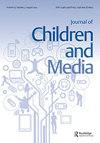Exploring adolescents’ vulnerability and resilience to online risks in Trinidad and Tobago
IF 2.1
3区 心理学
Q2 COMMUNICATION
引用次数: 0
Abstract
ABSTRACT This study explored adolescents’ vulnerability and resilience to online risks in Trinidad and Tobago. Using nine focus groups consisting of fifty-one high school students, semi structured interviews were conducted to explore their experiences online and the strategies used to ensure their safety. The results indicate that adolescents experienced certain types of online risks and engaged in strategies and actions which they believe allowed them to securely navigate the internet and social networking platforms. Although they acknowledged that there exists a multiplicity of online risks, experiences of these risks were subject to their own behaviours. While adolescents did not recall how they learned their risk management strategies, such was demonstrative of their resilience and agency. Impact Summary Prior State of Knowledge: Adolescents, as digital natives experience a multiplicity of risks while traversing cyberspace. These risks are categorized as content-related, contact-related and conduct related. Adolescents employ risk mitigation strategies to reduce their online vulnerabilities. Novel Contributions: The unique vulnerabilities, and resilience strategies employed by adolescents in Trinidad and Tobago while online are reliant on familiarity of risks and involve an amalgam of self-reported personal responsibilities, self-regulatory behaviours, and parental regulatory measures. Practical Implications: Online risk mitigation by adolescents is dependent on personal or vicarious experiences of risk. The Secondary School’s Education Curriculum should therefore be geared towards expanding adolescents’ knowledge of probable online risks and mitigation strategies employed to successfully navigate these risks.探讨特立尼达和多巴哥青少年对网络风险的脆弱性和抵御能力
摘要本研究探讨了特立尼达和多巴哥青少年对网络风险的脆弱性和抵御能力。使用由51名高中生组成的9个焦点小组,进行了半结构化访谈,以探索他们的在线体验以及确保他们安全的策略。研究结果表明,青少年经历了某些类型的网络风险,并参与了他们认为可以安全浏览互联网和社交网络平台的策略和行动。尽管他们承认存在多种网络风险,但这些风险的经历取决于他们自己的行为。虽然青少年不记得他们是如何学习风险管理策略的,但这表明了他们的韧性和能动性。影响总结先前的知识状态:青少年作为数字原住民,在穿越网络空间时会经历多种风险。这些风险分为与内容相关、与联系人相关和与行为相关。青少年采用风险缓解策略来减少他们的网络脆弱性。新颖贡献:特立尼达和多巴哥青少年在网上使用的独特脆弱性和恢复策略依赖于对风险的熟悉程度,并涉及自我报告的个人责任、自我监管行为和父母监管措施的混合。实际意义:青少年的在线风险缓解取决于个人或替代的风险体验。因此,中学的教育课程应致力于扩大青少年对可能的网络风险的了解,以及成功应对这些风险所采用的缓解策略。
本文章由计算机程序翻译,如有差异,请以英文原文为准。
求助全文
约1分钟内获得全文
求助全文

 求助内容:
求助内容: 应助结果提醒方式:
应助结果提醒方式:


